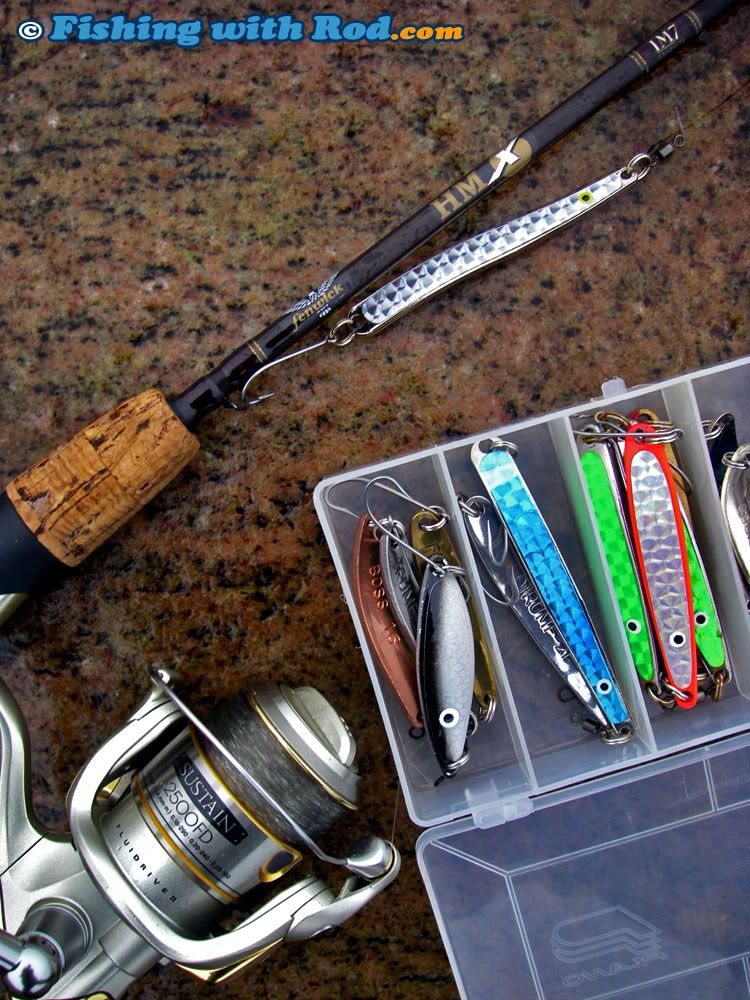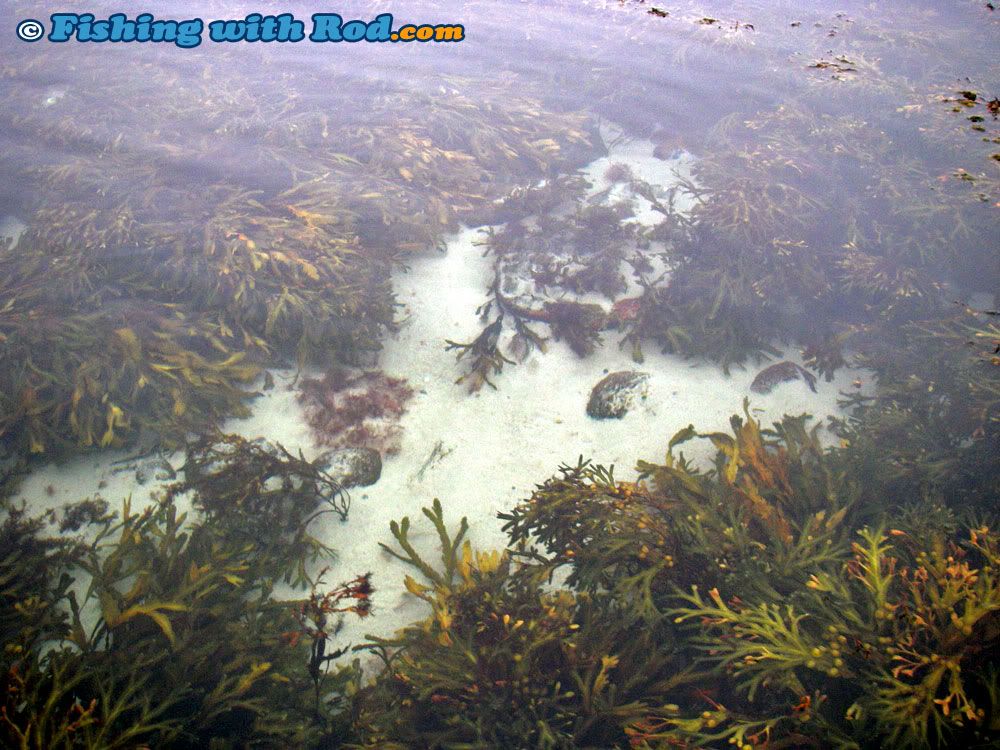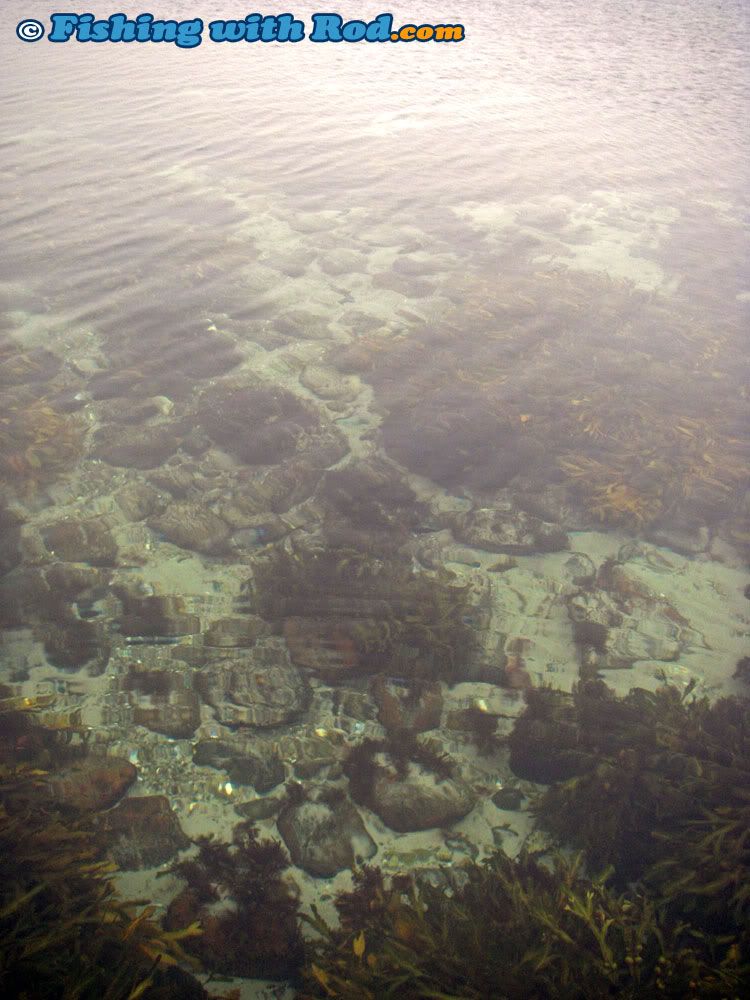The wind was blowing hard from the east today, which was perfect as I wanted to fish a spot on the west coast where I couldn’t last week due to the strong head wind. Strong head wind does not only make casting difficult, it stirs up bottom substrates and reduces clarity. With a tailwind, the sea becomes flat and it in fact becomes an advantage when distance is needed in casting.
As usual, it was a misty morning start in Denmark. Temperature hovered at 3 degrees celcius and was expected not to change throughout the day. One couldn’t really ask for better beach fishing condition on a winter day.
I began working the beach with the spinning rod. Spincasting is popularly fished on the beach in Denmark. It allows the angler to cover much larger area and deeper water, so chances of getting into larger sea trout are also increased. Unlike migratory pacific salmon that travel in large masses, these fish school and travel in an irregular pattern. The behaviour is somewhat similar to coastal cutthroat trout, except the travelling space is much larger. To increase success, one can only systematically cover a beach by taking a few step after each cast.
Typical beach lures used while spinning are long, thin yet heavy ones that resemble either herring or sand eel. Combining the retrieving/pausing pattern and the wave motion, their swim becomes rather realistic in the water. These lures weigh between 10 and 30 grams, so they allow the angler to cast them as far as over 200 feet when needed.

Sea trout hunting ground is usually covered with algae (Specifically, fucus, a species of brown algae that tends to dominate the inter and subtidal zones) and rocks. Reefs, as the locals call them, are prime habitat for shrimp, worms and small fish. They hunt by travelling over, in, between the dark substrates. The idea is to work your presentation through them and hopefully it would grab a hunter’s attention.


Exploring these reefs closely with your eyes while fishing can often lead to small yet fascinating discoveries. They are alive with organisms. Snails, starfish, shrimps, jellyfish and barnacles are often sighted. Today I found myself standing next to a juvenile flounder that laid on the bottom comfortably.

After working across a beach for an hour, excitement began to fade as no bites were detected. The outing usually starts with a high anticipation, not a high expectation. After being blanked so many times, I’ve learned that if one shows up with a high expectation in a beach sea trout fishery, then the disappointment at the end of the day may just be too much to handle.
I decided to walk over to a new section slightly further north from my starting point. The ground appeared to be heavily covered, so perhaps there was a trout hiding in it. When the lure approached me on the first retrieve, I noticed a dark clump of matter behind it. My first guess was a clump of weed but I could not feel any additional resistance on the line. A few seconds later, when the lure was much closer to me, I could see that it was in fact a fish following it! I suddenly paused the retrieve and a second fish showed itself beside the first one. Just as they were ready to fight over the piece of metal, I ran out of retrieve space!
At this point, both panic and excitement were having a party in my head. I made another quick short cast beyond where the fish were spotted. As if a pack of wolves had been woken up, a dozen sea trout suddenly darted out from the weed beds and a few small boils could be seen on the surface! Once again, not a single fish committed to a solid bite before I ran out of water to retrieve. Another short cast and retrieve triggered mor fish to chase, but none were tricked. It ended as fast as it started, after three casts all of them disappeared instantly.
I stood there like a fool. Should I continue casting straight out, or move left, or move right? In river fishing, if a fish is spotted, you can pretty much find it again as there is only so much room to cover. It becomes a bit tricky when there are a gazillion litres of water in front of you.
I decided to continue my path and work my way toward north, hoping that I would intercept more fish. Were they sea trout? Perhaps these were escaped rainbow trout from farms. They were after all, chasing and exposing themselves quite blatantly or foolishly as if they were untouchable. Well, they were not touched, so I guess they were more blatant than foolish. Escaped rainbow trout are problematic in European coastal waters. Like any invasive species, they alter the balance on sea trout’s ecosystem. Local anglers believe that rainbow trout farmers purposely lose their fish for insurance claims.
On second thought, I believed they were in fact sea trout. All fish I spotted were estimated to be between 12 and 18 inches long. Their bodies were silver and possess the slender shape that one would see in a natural growth.

 Author
Topic: Off to Euroland (Read 21293 times)
Author
Topic: Off to Euroland (Read 21293 times)

